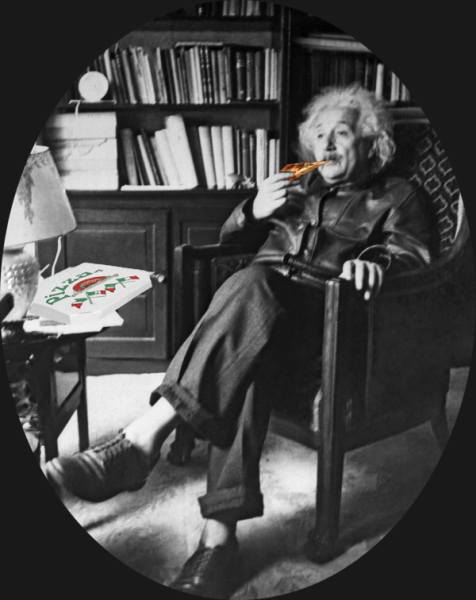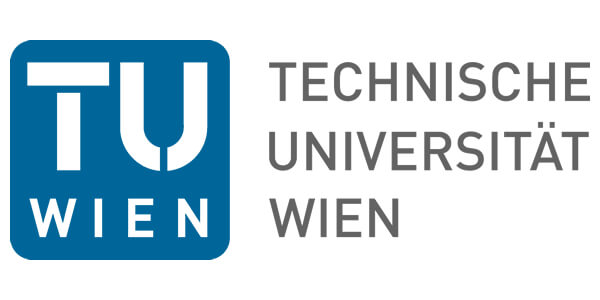|
Oct 1, 2024
|
NO SEMINAR
|
|
|
Oct 8, 2024
|
NO SEMINAR
|
|
|
Oct 15, 2024
|
NO SEMINAR
|
|
|
Oct 22, 2024
TU
12:30 - 13:45
|
Andreas Irmler
(TU Wien)
|
Computational Solutions to the Many-Body Schrödinger Equation Using High-Performance Computing
Despite being studied for over a decade solving the electronic Schroedinger equation exactly for systems with more than a few electrons remains a significant challenge. In this presentation, I will discuss why obtaining sufficiently accurate solutions is inherently complex and why such solutions are still urgently needed. To address this, I will introduce the Coupled Cluster method, a powerful approach that reformulates the problem into an algebraic framework. Additionally, I will demonstrate how the resulting equations can be efficiently solved using supercomputing techniques.
|
|
Oct 29, 2024
|
NO SEMINAR
|
|
|
Nov 5, 2024
TU
|
Daniel Wieser
(TU Wien)
|
Single-boson exchange decomposition for the extended Hubbard model with application to the optical conductivity
In order to fully capture the effects of strong correlations on
condensed matter, it is in principle necessary to solve the many-body
Schrödinger equation. Because this is practically impossible for systems
larger than a few electrons, numerous methods and approximations have
been developed to date. After a short introduction to the Matsubara
formalism, I will present two of them, namely the parquet- and the newly
developed single-boson exchange decomposition. Subsequently, both
approaches are applied to the extended Hubbard model in exact
diagonalization to analyze the influence of vertex corrections on the
optical conductivity.
|
|
Nov 12, 2024
UV
|
Lin-Qing Chen
(IQOQI & Uni Wien)
|
Probing Quantum Aspects of Gravitational Fields
Recent progress in table-top experiments offers the opportunity to show for the first time that gravity is not compatible with a classical description. However, in all current experimental proposals, such as the generation of gravitationally induced entanglement between two quantum sources of gravity, gravitational effects can be explained with the Newton potential. This is a limitation to the conclusions on the nature of gravity that can be drawn from these experiments.
Here, I will introduce a theoretical framework that is suitable for this experimental regime, and we identify two effects that overcome the above-mentioned limitation. First, we show that the phase arising from the interaction between two generic quantum sources of gravity, cannot be reproduced with the Newton potential nor with any limit of (classical) general relativity. Second, we show that the quantum commutator between the gravitational field and its canonically conjugate momentum appears as an additional term in the relative phase of a generic quantum source interacting with a moving test particle. Observing this term in the phase would be a test of the gravitational field as a quantum mediator.
|
|
Nov 19, 2024
TU
|
Ruma Maity
(TU Wien)
|
Successful training of a triangular swimmer: a genetic algorithm approach
Natural microswimmers use various swimming gaits to propel under low Reynolds number conditions in their fluid surrounding for various reasons: search for nutrition, escape from predators or search for prey. A very common strategy for propulsion is the non-reciprocal deformation of the shape of the swimmer in an effort to realize its motion through the medium. In recent times efforts have been made to design artificial swimmers that can successfully mimic their natural counterparts and are thus able to perform specific tasks, such as targeted drug delivery in the case of nanomedical applications. In this work, we train a two-dimensional, triangular swimmer to move in a desired direction and to detect in an efficient manner nutrition sources.
|
|
Nov 26, 2024
|
NO SEMINAR
|
|
|
Dez 3, 2024
TU
|
Helmut Hörner
(TU Wien)
|
Python Library for Simulating Optical Systems, Cavities and Ring Cavities
In my talk I present a Python library I’ve developed that facilitates the simulation of optical light propagation, optical cavities, and optical ring cavities (in the classical domain). The software tool is designed to enhance the ability to model and analyze these systems with great efficiency and minimal effort on your personal PC as well as on the VSC cluster. It offers a wide range of “components” out of the box, including partially and totally reflective plane and curved mirrors, lenses, apertures, absorbers, beam-splitters, and various light sources.
|
|
Dez 10, 2024
UV
|
Garance Lankester and Stefan Daniel Nellen Mondragon
(University of Vienna, ÖAW)
|
Dark Matter Signal from Atomic to Galactic Scales
Despite extensive observational evidence, the true nature of Dark Matter (DM) remains one of the most persistent mysteries in modern physics. A key challenge lies in DM's weak interaction with ordinary matter, which results in subtle and difficult-to-detect signals. This talk will provide a comprehensive overview of the current understanding of DM, from its historical foundations to the latest advancements in both direct and indirect detection methods. At the galactic scale, we will focus on the implications of Self-Interacting Dark Matter (SIDM) in addressing the small-scale structure problem. Additionally, we will explore how phenomena intrinsic to matter, such as the Migdal effect, can significantly enhance the sensitivity of direct detection experiments, potentially unlocking new avenues for observing DM.
|
|
Dez 17, 2024
TU
|
Max Riegler
(qtlabs)
|
An Introduction to Quantum Key Distribution and Numerical Security Proofs
Quantum Key Distribution (QKD) offers a novel approach to secure communication, leveraging the laws of quantum mechanics. This talk will introduce the fundamental principles behind QKD and highlight its unique advantages. We will explore how numerical methods are used to rigorously certify the security of QKD systems, even in the presence of practical imperfections in hardware and implementation. By combining concepts from physics, information theory, and optimization, these security proofs bridge the gap between theory and real-world applications.
|
|
Dez 24, 2024
|
NO SEMINAR
|
|
|
Dez 31, 2024
|
NO SEMINAR
|
|
|
Jan 7, 2025
|
NO SEMINAR
|
|
|
Jan 14, 2025
TU
|
Philipp Neckam
(TU Wien)
|
Higher-Spin Gravity in Three-Dimensional Flat Space
Theories of interacting massless fields of spin larger than two naturally emerge in the high-energy limit of string theory. When including gravity, these theories also serve as toy models to investigate the holographic AdS/CFT correspondence in a more controlled setting. While it has long been known that the existence of such theories is strongly restricted by various no go theorems, in three dimensions none of these results apply, thus providing an ideal setting to study higher-spin gravity. Even so, the investigation of three-dimensional metric-like higher-spin gravity theories has been initiated only recently in 2018, and the work discussed here is a continuation of these efforts. The Noether-procedure is generalized to three dimensions, taking into account the influence of dimension-dependent-identities. Starting from cubic interaction vertices, the induced deformations of the gauge transformations as well as the resulting gauge brackets are then determined at first order. The consistency of these methods is demonstrated for the example of spin-3-gravity by verifying the Jacobi-identity as well as the closure of the gauge algebra. The coupling of matter to the higher-spin fields is also investigated.
|
|
Jan 21, 2025
UV
|
Robert Tiefenbacher
(University of Vienna)
|
Family of Weyl-algebras and the Carrollian limit
Carrollian field theories arise from the idea of letting c go to 0. The interest in such bizarre field theories comes first of all from the fact that the result is not nonsensical and the connection to flat space holography and tachyons. We show a different approach to Carroll theories, where we scale a regular complex scalar field in such a way as to reproduce a Carroll theory in the limit. This allows us to construct a family of Weyl-algebras associated to the scaled complex fields and "limit" algebra.
|


